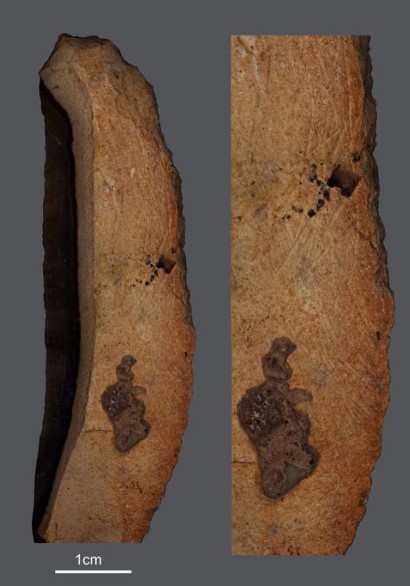The emergence of artistic expression, abstract thought, and symbolic behavior may have occurred much earlier in human history than previously assumed. Presenting a collection of deliberate engravings found on Paleolithic cave rocks from various caves in key Levantine sites, researchers say they now have clear evidence for creative activities at a time when Neanderthals and other archaic humans still roamed the Earth.
ADVERTISEMENT GO AD FREE
The designs were discovered on Levallois cores, which were rocks selected for knapping to produce sharp flakes that could then be fashioned into tools or weapons. Such cores were typically discarded after flaking, although it seems that some ancient hominids felt the need to doodle on their materials as they used them.
According to the study authors, these findings help to settle the debate as to whether or not humans were capable of creating art during the Middle Palaeolithic – which lasted from roughly 250,000 to 45,000 years ago. Previously, it had been suggested that such complex cognitive behaviors were absent until modern Homo sapiens entered the scene.
Cores decorated with geometric designs were found at the Manot Cave – in which a 55,000-year-old human skull was once discovered – and the Qafzeh Cave, where human burials dated to around 100,000 years ago have been unearthed. The researchers also found etchings on a 54,000-year-old stone plaquette from the open-air site of Quneitra.
Using advanced 3D surface analysis techniques, they found that all of these engravings feature geometric designs that align with the surface topography, suggesting they were created as deliberate symbolic expressions. On the Manot core, for example, “the incisions form a radiating fan of lines oriented towards the slightly smoothed high point on the preparation surface,” the authors explain in their paper.
“The uniqueness of these engraved cores, and the patterns formed by the incisions suggest they are the outcome of intent and creativity. This type of manifestation can be interpreted as an act of deliberate intent to incise and form a pattern while knapping,” they add.
ADVERTISEMENT GO AD FREE
The Quneitra plaquette, meanwhile, is adorned with “a concentric pattern of incisions” that matches a similar design found on an auroch bone nearby, while the Qafzeh core was discovered next to a human burial and a large deposit of ochre, suggesting symbolic behavior.
By comparison, incision marks on artifacts from the nearby Amud cave – where Neanderthal burials have been uncovered – appear “shallower, with no clear orientation or patterning.”
Such markings match those found on other stone tools from the Middle Palaeolithic in Italy, all of which have been interpreted as unintentional scratches produced by functional use.
A stone blade from Amud cave, featuring unintentional incisions created by abrasion.
Image credit: Photo by Erella Hovers
By comparing the Manot, Qafzeh, and Quneitra engravings with those from Amud, the study authors are able to highlight the differences between deliberate and accidental incisions on prehistoric lithic artifacts. In doing so, they suggest that some ancient hominids in the Middle East were indeed capable of artistic expression.
ADVERTISEMENT GO AD FREE
“Abstract thinking is a cornerstone of human cognitive evolution,” said co-lead researcher Dr Mae Goder-Goldberger in a statement. “The deliberate engravings found on these artefacts highlight the capacity for symbolic expression and suggest a society with advanced conceptual abilities.”
The study is published in the journal Archaeological and Anthropological Sciences.
Source Link: Prehistoric Engravings Suggest Symbolic Behavior In Ancient Humans
